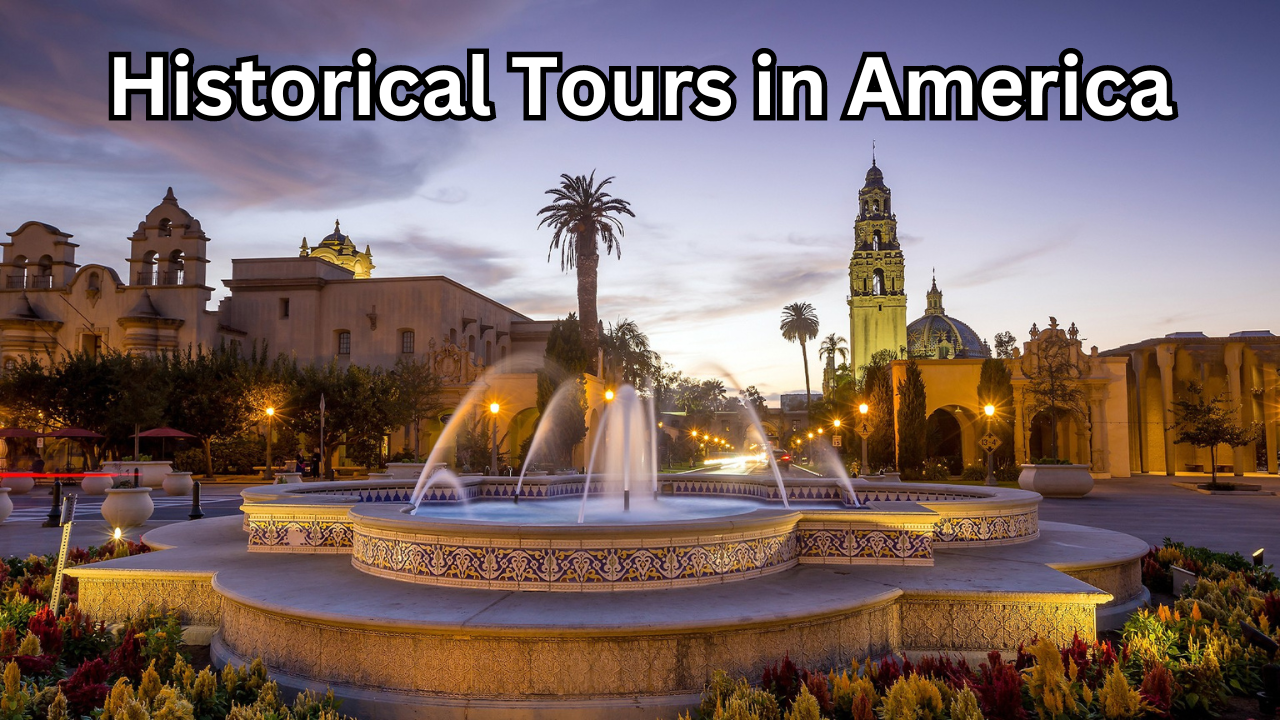Table of Contents
Introduction
Historical Tours in America, America’s rich tapestry of history is woven with tales of revolution, innovation, and cultural evolution. From the cobblestone streets of Boston to the battlefields of Gettysburg, historical tours across the United States offer a profound connection to the past. These tours not only serve as a window into the nation’s formative events but also provide a deeper understanding of the diverse influences that have shaped the country.
Overview of Historical Tours in America
Historical tours in America encompass a wide array of experiences, from guided walks through colonial towns to explorations of Civil War sites and visits to iconic landmarks of political and social change. Key destinations include the Freedom Trail in Boston, Independence Hall in Philadelphia, and the historic landmarks of New York City in the Northeast. The Southeast boasts Washington, D.C.’s National Mall, Charleston’s antebellum homes, and the plantations of Savannah. In the Midwest, Chicago’s architectural tours, the Gateway Arch in St. Louis, and the historic river towns along the Mississippi stand out. The Southwest features the Alamo in San Antonio, the Pueblo ruins in New Mexico, and the gold rush towns of Colorado. On the West Coast, one can explore the missions of California, the Gold Rush history of San Francisco, and early Hollywood sites in Los Angeles. Each region offers unique insights into different eras and aspects of American history, making these tours a valuable resource for education and cultural appreciation.
Importance of Historical Tours
Historical tours play a crucial role in preserving and promoting the nation’s heritage. They provide several key benefits. Firstly, they offer immersive learning experiences that bring history to life, providing context to historical events and figures, making them more relatable and memorable. Secondly, by visiting historical sites, tourists gain a deeper appreciation of the cultural and societal developments that have shaped America, fostering a sense of identity and continuity. Thirdly, historical tourism significantly contributes to local economies by attracting visitors, creating jobs, and supporting businesses related to travel and hospitality. Furthermore, tourism generates funds and awareness for the conservation of historic sites, ensuring that important landmarks and artifacts are maintained for future generations. Lastly, historical tours often involve local guides and experts, which helps build community pride and involvement in preserving local heritage.
Brief History of Tourism in America
Tourism in America has evolved significantly over the centuries. In the early 19th century, the concept of leisure travel began to gain popularity among the wealthy, with sites of natural beauty like Niagara Falls and historic significance like Mount Vernon becoming early tourist attractions. The advent of the railroad in the mid-19th century democratized travel, making it more accessible to the middle class and spurring the growth of tourism. The late 19th and early 20th centuries saw the rise of national parks, promoted by figures like John Muir, drawing visitors to the country’s natural wonders. During the same period, cities like New York, Chicago, and San Francisco became cultural and commercial hubs, attracting tourists from across the country and the world. The post-World War II era marked a boom in domestic travel, fueled by economic prosperity and the expansion of the interstate highway system. This period also saw the growth of theme parks, with Disneyland opening in 1955, blending entertainment with aspects of American history and culture. Today, tourism is a major industry in America, with historical sites playing a central role. From presidential homes and battlefields to museums and heritage trails, these destinations continue to educate and inspire millions of visitors each year.
Colonial America
Early Settlements
The early settlements of America mark the beginning of European colonization and the complex history that followed. These pioneering ventures were driven by a mix of religious, economic, and exploratory motives. The struggle to establish stable communities in the New World was fraught with challenges, including harsh climates, conflicts with Indigenous peoples, and shortages of supplies. However, these early settlements laid the foundation for what would become the United States, shaping the country’s development through their successes and failures.
Jamestown: The First Permanent English Settlement
Jamestown, established in 1607, stands as the first permanent English settlement in North America. Located in what is now Virginia, Jamestown was founded by the Virginia Company of London with the goal of finding gold and establishing a profitable colony. The early years were marked by extreme hardship, including conflicts with local Powhatan tribes, disease, and food shortages. Despite these difficulties, the colony survived due to the leadership of figures like Captain John Smith and the eventual introduction of tobacco cultivation by John Rolfe, which proved to be economically successful. Jamestown’s endurance and growth marked a significant milestone in American history, setting the stage for further English colonization and the expansion of European influence in the New World.
Plymouth: The Pilgrims’ Journey
In contrast to Jamestown’s commercial ambitions, Plymouth Colony was founded by the Pilgrims seeking religious freedom. Arriving aboard the Mayflower in 1620, the Pilgrims settled in what is now Massachusetts. Their journey was driven by a desire to escape religious persecution in England and to create a community based on their own religious ideals. The Pilgrims’ first winter was harsh and devastating, with many succumbing to the cold and disease. However, with the assistance of Indigenous peoples such as Squanto, who taught them essential agricultural techniques, they managed to establish a sustainable colony. Plymouth became a symbol of perseverance and the quest for religious freedom, and the story of the Pilgrims’ arrival is commemorated in the annual Thanksgiving holiday, reflecting their enduring legacy in American cultural memory.
Colonial Life
Colonial life in America was characterized by a blend of adaptation, hardship, and innovation as settlers from Europe sought to establish new communities in an unfamiliar land. Daily life varied significantly based on region, social class, and occupation, but common themes included a reliance on agriculture, the development of local economies, and the creation of distinct cultural traditions. Settlers faced numerous challenges, from harsh weather conditions to conflicts with Indigenous peoples and limited resources. Community life often centered around the church and local governance, with education and social norms heavily influenced by European traditions. Despite these challenges, the colonists’ resourcefulness and resilience contributed to the growth and stability of the American colonies, setting the stage for future development and the eventual quest for independence.
Colonial Williamsburg: A Living History Museum
Colonial Williamsburg, located in Virginia, is a premier example of a living history museum that offers visitors an immersive experience into 18th-century American life. Founded as a historical restoration project in the 1920s, Williamsburg has been meticulously restored to reflect its colonial-era appearance and atmosphere. The museum features over 500 restored buildings, including homes, shops, and public buildings, and employs costumed interpreters who demonstrate traditional crafts, trades, and daily activities. Visitors can explore the reconstructed Capitol, Governor’s Palace, and various trades such as blacksmithing and weaving, gaining a firsthand understanding of colonial society. Colonial Williamsburg serves as an educational resource, preserving the history of one of America’s most significant colonial capitals and providing a tangible connection to the past.
Historic Philadelphia: Birthplace of American Independence
Historic Philadelphia stands as a cornerstone of American history, embodying the spirit of independence that defined the nation’s early years. As the site of the Continental Congress, Philadelphia was instrumental in the events leading to American independence. The city is home to iconic landmarks such as Independence Hall, where the Declaration of Independence was debated and adopted in 1776, and the Liberty Bell, a symbol of freedom and liberty. Visitors to Historic Philadelphia can explore the National Constitution Center, which offers interactive exhibits on the U.S. Constitution, and the Betsy Ross House, where the first American flag is said to have been sewn. The city’s rich history is preserved in its well-maintained historic districts, museums, and landmarks, making it a vital destination for understanding the birth of the United States and its foundational ideals.
Revolutionary War Era
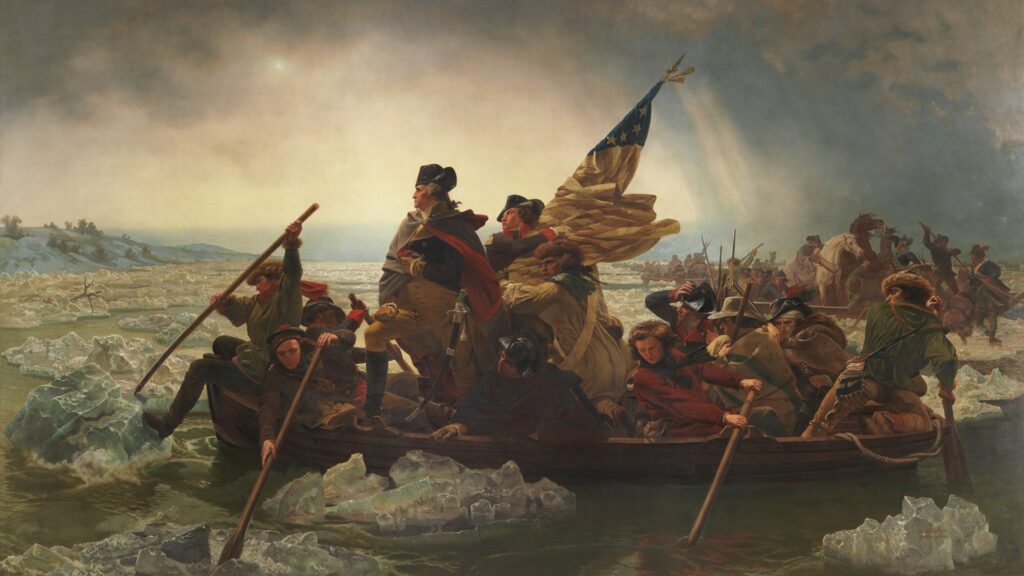
Key Battlefields
Key battlefields in American history are pivotal sites where critical events unfolded, shaping the course of the nation. These locations not only serve as reminders of the struggles and sacrifices made during conflicts but also as symbols of courage, strategy, and determination. From the early skirmishes of the American Revolution to the decisive battles of the Civil War, these battlefields offer insights into the military strategies and personal stories that define America’s historical legacy.
Lexington and Concord: The First Shots of the Revolution
The battles of Lexington and Concord, fought on April 19, 1775, mark the beginning of the American Revolutionary War. These skirmishes were the first instances of open conflict between British troops and colonial militias. The confrontation began at Lexington Green, where a small group of colonial militia faced off against British regulars. The exchange of gunfire, often referred to as “the shot heard ’round the world,” signified the colonists’ resolve to resist British rule. The subsequent battle at Concord’s North Bridge saw the colonial forces successfully repel the British troops, forcing them to retreat to Boston. These early engagements demonstrated the colonists’ determination to fight for their rights and liberties and set the stage for the broader struggle for independence.
Yorktown: The Decisive Victory
The Siege of Yorktown, which took place from September 28 to October 19, 1781, was a decisive victory for the American and French forces during the Revolutionary War. General George Washington, commanding the Continental Army, along with French forces led by General Rochambeau, successfully trapped British General Cornwallis and his troops in the town of Yorktown, Virginia. The combined American and French forces executed a strategic siege, cutting off British supplies and reinforcements. The surrender of Cornwallis effectively ended major combat operations in the war and marked a turning point towards American independence. The victory at Yorktown was instrumental in securing the terms of the Treaty of Paris, which formally ended the war and recognized the sovereignty of the United States.
Significant Figures
Significant figures in American history have left indelible marks on the nation’s development, shaping its political, cultural, and social landscape. Among these figures are the Founding Fathers and other key leaders whose contributions were instrumental in the formation of the United States. Their homes, now preserved as historic sites, offer insights into their lives, values, and the legacy they left behind. Two prominent examples are Mount Vernon, the estate of George Washington, and Monticello, the home of Thomas Jefferson, both of which provide a window into the lives of these influential leaders and their enduring impact on American history.
Mount Vernon: Home of George Washington
Mount Vernon, located in Virginia, is the historic estate of George Washington, the first President of the United States. Purchased by Washington in 1754, Mount Vernon became his primary residence and a symbol of his status and achievements. The estate features the elegant Georgian mansion where Washington lived with his wife, Martha, and managed his extensive plantation. Visitors can explore the meticulously preserved home, including Washington’s study and personal quarters, as well as the beautifully landscaped grounds, gardens, and outbuildings such as the distillery and gristmill. Mount Vernon serves as a testament to Washington’s leadership and personal life, offering insights into his role in shaping the early Republic and his contributions to American independence.
Monticello: The Legacy of Thomas Jefferson
Monticello, situated in Virginia’s Piedmont region, was the lifelong home of Thomas Jefferson, the third President of the United States and the principal author of the Declaration of Independence. Designed by Jefferson himself, Monticello reflects his architectural vision and intellectual pursuits. The estate includes the distinctive neoclassical mansion, which Jefferson expanded and modified over several decades, as well as extensive gardens, orchards, and agricultural facilities. Monticello also features the Jefferson Library and numerous outbuildings related to the estate’s operations. The site offers a comprehensive view of Jefferson’s legacy, including his contributions to American democracy, education, and science. Monticello’s preservation and interpretation highlight both Jefferson’s achievements and the complexities of his life, including his role as a slave owner, providing a nuanced understanding of his impact on American history.
Civil War Sites
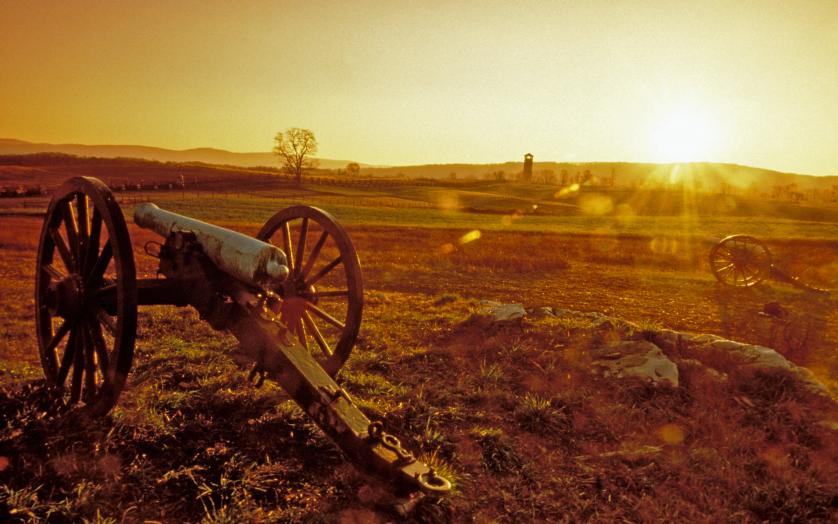
Major Battlefields
Major battlefields are critical sites in American history where pivotal conflicts shaped the nation’s trajectory. These locations not only mark significant military engagements but also embody the courage, strategy, and sacrifice of those who fought. The battles fought on these fields had profound effects on the course of American history, influencing political outcomes, military tactics, and the national consciousness. Two notable examples are Gettysburg and Antietam, both of which hold special significance for their roles in the American Civil War.
Gettysburg: Turning Point of the Civil War
The Battle of Gettysburg, fought from July 1 to July 3, 1863, is often considered the turning point of the American Civil War. This pivotal clash occurred in Gettysburg, Pennsylvania, and marked the end of General Robert E. Lee’s second invasion of the North. The battle involved over 160,000 soldiers and resulted in a significant Union victory under General George G. Meade. The intense fighting, including notable engagements such as Pickett’s Charge, resulted in heavy casualties on both sides. Gettysburg is renowned not only for its strategic importance but also for President Abraham Lincoln’s Gettysburg Address, delivered four months later, which redefined the purpose of the war and underscored the principles of equality and national unity. The battlefield, now preserved as Gettysburg National Military Park, serves as a memorial to those who fought and a testament to the profound impact of the battle on the course of American history.
Antietam: The Bloodiest Day in American History
The Battle of Antietam, fought on September 17, 1862, holds the grim distinction of being the bloodiest single day in American history. Taking place near Sharpsburg, Maryland, this engagement involved Union and Confederate forces clashing with unprecedented intensity. Commanded by General George McClellan for the Union and General Robert E. Lee for the Confederacy, the battle resulted in approximately 23,000 casualties, including killed, wounded, and missing soldiers. Although the battle ended inconclusively, with neither side achieving a decisive victory, it had significant consequences. The Union’s strategic success in repelling Lee’s invasion of the North allowed President Abraham Lincoln to issue the Emancipation Proclamation, which declared the freedom of enslaved people in Confederate-held territories. Antietam’s high casualties and strategic implications make it a pivotal moment in the Civil War, and the Antietam National Battlefield now stands as a somber reminder of the war’s human cost and a site for reflection on its historical significance.
Historic Homes and Landmarks
Historic homes and landmarks offer valuable insights into pivotal moments and influential figures in American history. These sites provide a tangible connection to the past, allowing visitors to explore the lives, events, and decisions that have shaped the nation. Two such landmarks, Ford’s Theatre and Appomattox Court House, are deeply intertwined with significant events of the American Civil War and its aftermath, marking their places in the historical narrative with profound impact.
Ford’s Theatre: The Assassination of Abraham Lincoln
Ford’s Theatre, located in Washington, D.C., is famously associated with the assassination of President Abraham Lincoln. On the evening of April 14, 1865, President Lincoln was attending a play, “Our American Cousin,” at Ford’s Theatre when John Wilkes Booth, a Confederate sympathizer, entered the presidential box and shot Lincoln. The assassination occurred just days after General Robert E. Lee’s surrender at Appomattox Court House, effectively ending the Civil War. Lincoln was taken across the street to the Petersen House, where he died the following morning. Ford’s Theatre, preserved as a historic site and museum, offers a detailed account of the events surrounding the assassination and provides insight into Lincoln’s legacy and the broader impact of his death on the nation. The theatre’s preservation allows visitors to understand the historical context of this tragic event and reflect on its significance in American history.
Appomattox Court House: The Surrender Site
Appomattox Court House, located in Virginia, is renowned as the site where General Robert E. Lee surrendered to General Ulysses S. Grant on April 9, 1865, effectively ending the American Civil War. The surrender took place in the McLean House within the village of Appomattox Court House, marking a crucial moment in American history. The terms of surrender, which were remarkably generous, allowed Confederate soldiers to return home with their horses and personal belongings, facilitating a relatively peaceful transition towards post-war reconstruction. The site, now preserved as a national historical park, includes the McLean House and several other buildings from the period. Appomattox Court House stands as a symbol of reconciliation and the end of a brutal conflict, offering visitors a chance to understand the final moments of the war and the beginning of the nation’s efforts to rebuild and heal.
American Industrial Revolution
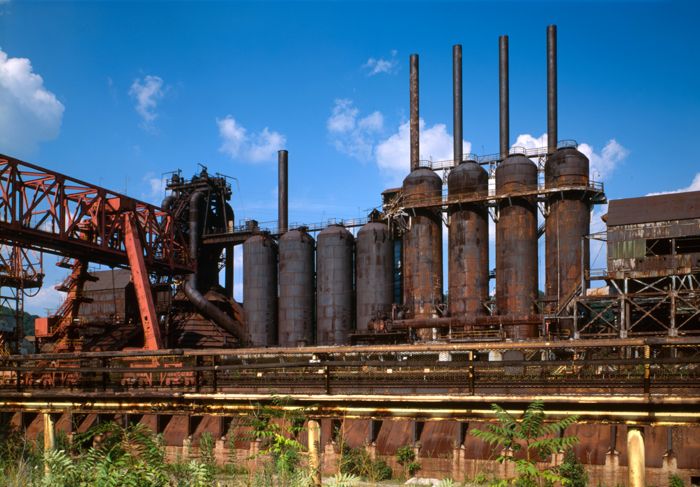
Technological Innovations
Technological innovations have profoundly influenced the development of American industry and society. By transforming how goods are produced and how people live and work, these advancements have played a key role in shaping the modern world. Historic sites dedicated to technological innovations offer a window into these transformative changes, showcasing the ingenuity and progress that have driven American economic and industrial growth. Two notable examples are The Henry Ford Museum and Lowell National Historical Park, which highlight crucial developments in industrial technology and manufacturing.
The Henry Ford Museum: Industrial Innovations
The Henry Ford Museum, located in Dearborn, Michigan, is a testament to the transformative impact of industrial innovations on American life. Established by industrialist Henry Ford, the museum showcases a vast collection of artifacts that trace the evolution of technology and industry. Key exhibits include the original 1903 Ford Model A, which revolutionized personal transportation through assembly line manufacturing, and Thomas Edison’s workshop, reflecting the advances in electrical technology. The museum also features significant innovations in aviation, agriculture, and communication, illustrating how these advancements have shaped modern society. By preserving and interpreting these technological milestones, The Henry Ford Museum offers visitors a comprehensive look at the evolution of American industry and the visionaries who drove these changes.
Lowell National Historical Park: The Textile Industry
Lowell National Historical Park, located in Lowell, Massachusetts, is dedicated to preserving the history of the American textile industry and its impact on industrialization. Founded in the early 19th century, Lowell became a prominent center of textile manufacturing, driven by innovations in mechanized spinning and weaving. The park includes several historic mills, such as the Boott Cotton Mills, which provide a glimpse into the scale and complexity of early industrial production. Visitors can explore exhibits and guided tours that highlight the lives of mill workers, the role of immigrant labor, and the technological advancements that fueled Lowell’s growth. The park’s preservation efforts offer valuable insights into the development of industrial America and the social and economic changes brought about by the textile industry.
Transportation Milestones
Transportation milestones are pivotal achievements in engineering and infrastructure that have profoundly impacted the growth and connectivity of the United States. These innovations not only facilitated economic expansion but also reshaped the social and cultural landscape of the nation. Two significant transportation milestones are the Transcontinental Railroad and the Erie Canal, both of which played crucial roles in linking regions and fostering development across the country.
The Transcontinental Railroad: Linking East and West
The completion of the Transcontinental Railroad in 1869 marked a transformative moment in American history. Stretching from Omaha, Nebraska, to Sacramento, California, this monumental engineering project connected the eastern and western coasts of the United States for the first time by rail. The Central Pacific and Union Pacific Railroads, which undertook the project, faced enormous challenges including treacherous terrain, labor shortages, and conflicts with Indigenous peoples. The final spike, known as the “Golden Spike,” was driven into the ground at Promontory Summit, Utah, symbolizing the unification of the country. The Transcontinental Railroad revolutionized transportation by significantly reducing travel time across the continent, stimulating economic growth, facilitating westward expansion, and promoting the movement of people and goods. It played a crucial role in shaping the economic and demographic landscape of the United States during the late 19th century.
The Erie Canal: Engineering Marvel of the 19th Century
The Erie Canal, completed in 1825, stands as one of the greatest engineering feats of the 19th century and a cornerstone of American transportation history. Spanning 363 miles from Albany to Buffalo, New York, the canal connected the Atlantic Ocean with the Great Lakes, creating a direct water route from the interior of the country to international markets. The canal’s construction involved overcoming significant logistical challenges, including navigating through swamps, forests, and various elevations. Its completion drastically reduced transportation costs, spurring economic development in New York and the surrounding regions. The Erie Canal facilitated the movement of goods such as grain, timber, and coal, and was instrumental in the growth of New York City as a major commercial hub. The canal’s success demonstrated the potential of large-scale infrastructure projects and had a lasting impact on American commerce and expansion, setting a precedent for future transportation innovations.
Native American Heritage
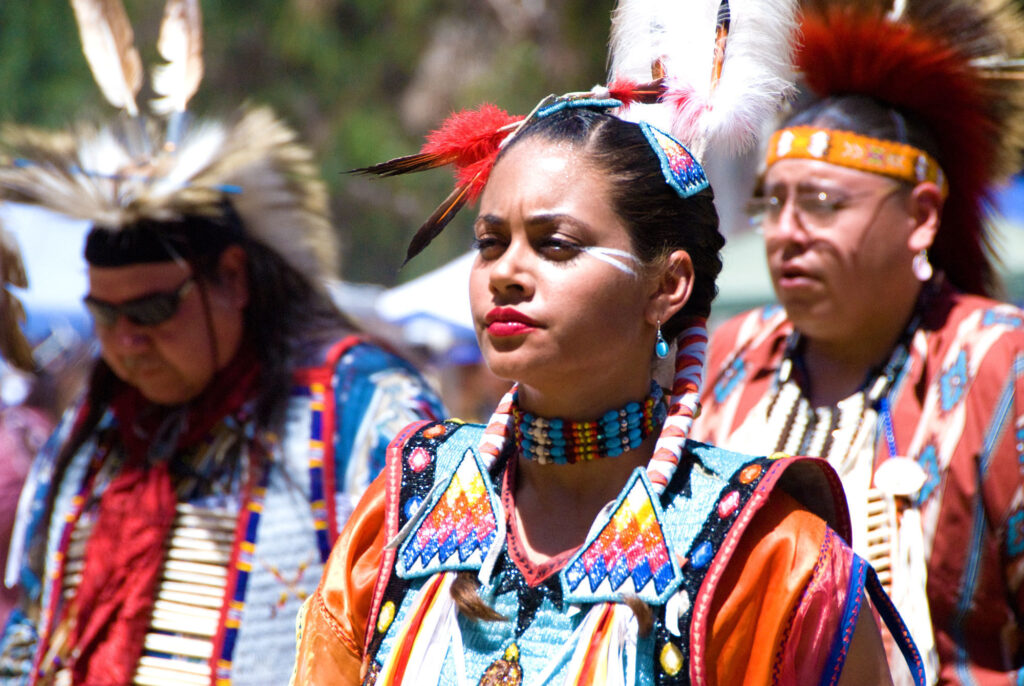
Ancient Civilizations
Ancient civilizations in North America reveal a rich tapestry of cultures, innovations, and societal structures that flourished long before European contact. These civilizations created impressive architectural feats and developed complex societies that left enduring legacies. Sites like Mesa Verde and Cahokia Mounds offer profound insights into the lives and achievements of these early inhabitants, highlighting their sophisticated understanding of architecture, agriculture, and urban planning.
Mesa Verde: Cliff Dwellings of the Ancestral Puebloans
Mesa Verde, located in southwestern Colorado, is renowned for its remarkable cliff dwellings built by the Ancestral Puebloans, also known as the Ancestral Puebloans. Dating from the late 12th to early 13th centuries, these cliff dwellings are intricately constructed into the sides of steep cliffs, offering protection and an impressive example of architectural ingenuity. The most famous of these sites is Cliff Palace, with its multi-story structures, ceremonial kivas, and extensive network of rooms. The Ancestral Puebloans utilized their environment effectively, creating a sophisticated society with advanced agricultural practices and extensive trade networks. The dwellings at Mesa Verde reflect the community’s adaptation to the challenging landscape and their complex social and cultural practices. Today, Mesa Verde National Park preserves these ancient sites, offering visitors a glimpse into the lives of a people who thrived in the region for centuries before the arrival of Europeans.
Cahokia Mounds: Pre-Columbian Urban Center
Cahokia Mounds, located near Collinsville, Illinois, represents one of the most significant pre-Columbian urban centers in North America. Flourishing between 1000 and 1350 CE, Cahokia was the largest and most influential city of the Mississippian culture, with a population that may have reached 20,000 at its peak. The site is notable for its large earthen mounds, such as Monk’s Mound, which served as platforms for important buildings and ceremonial spaces. Cahokia’s layout included a complex array of mounds, plazas, and residential areas, reflecting a highly organized and stratified society. The city’s inhabitants developed advanced agricultural techniques, including the cultivation of maize, and engaged in extensive trade networks that spanned much of the continent. Cahokia Mounds offers critical insights into the social, political, and economic organization of pre-Columbian societies in the Mississippian period, and its legacy continues to be studied and celebrated for its contributions to understanding early American civilizations.
Cultural Preservation
Cultural preservation plays a vital role in safeguarding the heritage and history of diverse communities. It involves the protection and celebration of historical sites, artifacts, and traditions that embody the identity and experiences of different groups. Two significant examples of cultural preservation in the United States are The Trail of Tears National Historic Trail and The National Museum of the American Indian. These sites serve to honor and educate the public about the rich cultural histories and the profound impacts of historical events on Native American communities.
The Trail of Tears National Historic Trail
The Trail of Tears National Historic Trail commemorates the forced relocation of the Cherokee Nation and other Native American tribes from their ancestral lands in the southeastern United States to territories west of the Mississippi River during the 1830s. This tragic event, known as the Trail of Tears, resulted from the Indian Removal Act of 1830, which led to the displacement and suffering of thousands of Native Americans. The trail stretches over 5,000 miles and includes multiple routes taken by the Cherokee and other tribes, with significant sites and historical markers along the way. The National Trail, administered by the National Park Service, aims to preserve and interpret the historical and cultural significance of this tragic chapter, providing educational resources and promoting understanding of the impact of forced migration on Native American communities. The Trail of Tears serves as a solemn reminder of the resilience and endurance of the affected tribes and the importance of acknowledging and learning from this painful period in American history.
The National Museum of the American Indian
The National Museum of the American Indian (NMAI), part of the Smithsonian Institution, is dedicated to preserving, documenting, and showcasing the rich cultural heritage of Native American peoples. Located on the National Mall in Washington, D.C., the museum houses a vast collection of artifacts, artwork, and cultural objects from indigenous cultures across the Americas. Its exhibits explore the diverse histories, traditions, and contemporary issues faced by Native American communities. The museum’s architecture, designed to reflect indigenous aesthetics and principles, complements its mission to honor and present Native American cultures in a respectful and accurate manner. Through its educational programs, exhibitions, and public events, the National Museum of the American Indian plays a crucial role in promoting awareness, fostering dialogue, and celebrating the diverse heritage of Native American peoples.
The Old West
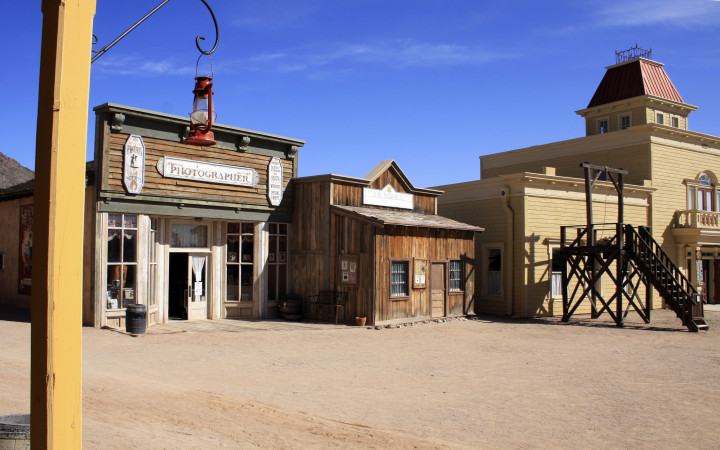
Frontier Life
Frontier life in America was characterized by a rugged determination to build new communities and explore uncharted territories. This period, spanning from the early 19th century to the end of the 1800s, was marked by the expansion into and settlement of the western frontier. Frontier towns and settlements often faced challenges such as harsh environments, conflicts with Indigenous peoples, and lawlessness. Despite these difficulties, the spirit of adventure and resilience drove settlers to establish vibrant communities, which later became iconic symbols of American history. Sites like Tombstone and Dodge City offer a glimpse into the dynamic and often tumultuous experiences of life on the frontier.
Tombstone: The Wild West Experience
Tombstone, Arizona, epitomizes the essence of the Wild West era with its colorful history of gunfights, outlaws, and mining prosperity. Founded in 1879 during a silver mining boom, Tombstone quickly gained a reputation as a bustling town with a rough-and-tumble character. It is famously known for the 1881 gunfight at the O.K. Corral, a dramatic confrontation between the Earp brothers and the Clanton-McLaury gang, which has become a legendary episode in Wild West lore. Today, Tombstone is preserved as a historic town where visitors can experience a taste of frontier life through its restored buildings, reenactments, and museums. Attractions like the Bird Cage Theatre and the Tombstone Courthouse State Historic Park offer insights into the town’s vibrant past and the larger-than-life characters that defined its history.
Dodge City: Lawmen and Outlaws
Dodge City, Kansas, is another iconic frontier town known for its turbulent history and its role in the law-and-order struggles of the Old West. Established in the 1870s, Dodge City became a major cattle town and a hub for the cattle drive era. Its reputation as a wild and lawless place earned it the nickname “Queen of the Cow Towns.” The town’s history is marked by famous lawmen such as Wyatt Earp and Bat Masterson, who worked to impose order and curb the influence of outlaws and gunfighters. Dodge City’s saloons, brothels, and cattle drives contributed to its colorful and often chaotic atmosphere. Today, Dodge City preserves its Wild West heritage through museums like the Boot Hill Museum, which features exhibits on the town’s infamous past and its role in shaping the mythos of the American frontier.
Gold Rush Era
The Gold Rush Era represents a transformative period in American history, marked by massive migrations and significant economic and social changes driven by the discovery of gold. This era, spanning from the mid-19th century, saw gold discoveries spark feverish rushes to newly found goldfields, leading to the rapid growth of towns and cities, and fundamentally altering the demographic and economic landscape of the regions affected. The influx of fortune seekers, adventurers, and settlers often led to dramatic shifts in local economies, cultures, and environments. Sites such as Sutter’s Mill and the Klondike Gold Rush National Historical Park are emblematic of this era, highlighting the excitement, challenges, and lasting impact of the gold rushes on American history.
Sutter’s Mill: The Beginning of the California Gold Rush
Sutter’s Mill, located near Coloma, California, is famously associated with the discovery of gold that ignited the California Gold Rush. In January 1848, James W. Marshall, an employee of John Sutter, discovered gold flakes in the American River while working on a sawmill project. This discovery, initially kept secret, eventually leaked and led to a massive influx of prospectors, miners, and settlers, profoundly impacting California and the nation. The Gold Rush transformed California from a sparsely populated territory into a booming state, accelerating its admission into the Union in 1850. Sutter’s Mill has since been preserved as a historic site, where visitors can explore the location of the original mill and learn about the historical context and consequences of the gold rush. The site serves as a reminder of the excitement and challenges of this pivotal period in American history.
The Klondike Gold Rush National Historical Park
The Klondike Gold Rush National Historical Park, located in Alaska and Yukon, Canada, preserves the history and legacy of the Klondike Gold Rush of 1896-1899. This gold rush began when gold was discovered in Bonanza Creek, a tributary of the Klondike River in the Yukon Territory, leading to a rush of miners and adventurers seeking their fortunes in the harsh and remote region. The park encompasses several key sites, including the historic town of Skagway, which served as a gateway for prospectors traveling to the Klondike, and the historic town of Dawson City, the central hub of gold rush activity. The park’s exhibits, preserved structures, and interpretive programs provide insights into the difficult journey endured by the thousands who sought to strike it rich, as well as the broader impact of the gold rush on the development of the region and its indigenous peoples. The Klondike Gold Rush National Historical Park offers a comprehensive view of this dramatic and influential chapter in American history.
20th Century America
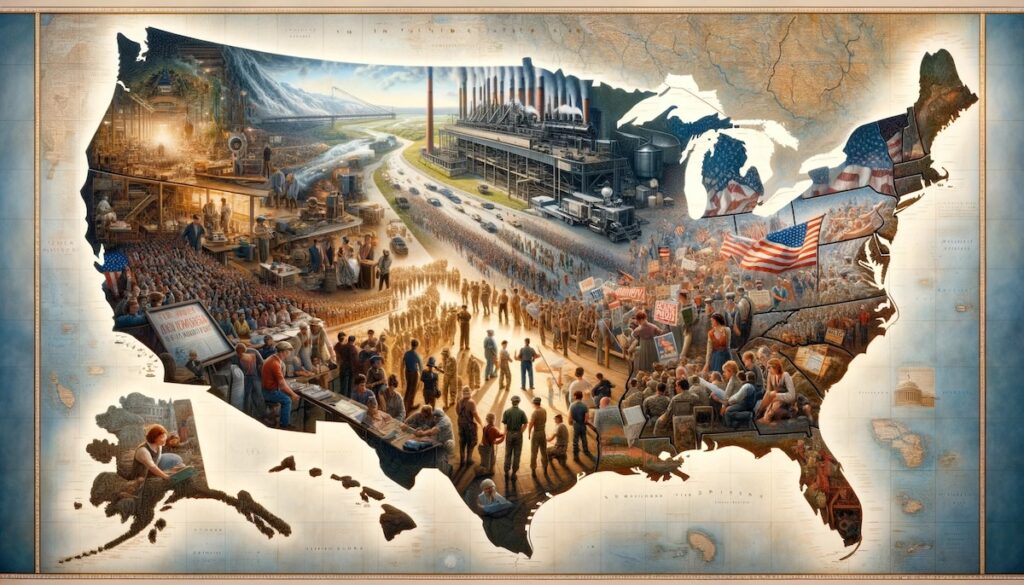
World War II Sites
World War II sites are critical for understanding the global conflict that shaped the 20th century and had a profound impact on international relations, military strategies, and human lives. These sites serve as memorials and educational resources, preserving the history and honoring the sacrifices made during the war. Two significant World War II sites are the Pearl Harbor National Memorial and The National WWII Museum. Each offers unique insights into different aspects of the war, from its pivotal battles to its broader historical context.
Pearl Harbor National Memorial: A Day of Infamy
The Pearl Harbor National Memorial, located in Hawaii, commemorates the events of December 7, 1941, when Japanese forces launched a surprise attack on the U.S. naval base at Pearl Harbor. This attack led to significant loss of life and was a pivotal moment that prompted the United States’ entry into World War II. The memorial includes several key sites such as the USS Arizona Memorial, which rests above the sunken battleship and serves as a tribute to the 1,177 sailors and Marines who lost their lives there. The Pearl Harbor Visitor Center offers exhibits, films, and artifacts that provide context and detail about the attack and its impact on the war. By preserving and interpreting these historic sites, the Pearl Harbor National Memorial serves as a powerful reminder of the events of that fateful day and the broader global conflict that followed.
The National WWII Museum: Honoring the Greatest Generation
The National WWII Museum, located in New Orleans, Louisiana, is dedicated to preserving the history and honoring the experiences of those who served during World War II. Established in 2000, the museum offers an extensive collection of exhibits, artifacts, and personal stories that cover various aspects of the war, including the battles, the home front, and the contributions of Allied and Axis powers. The museum’s exhibits include immersive displays, interactive features, and first-person accounts that provide a comprehensive understanding of the conflict and its global impact. Visitors can explore sections dedicated to the European and Pacific theaters, as well as the experiences of soldiers, sailors, airmen, and civilians. The National WWII Museum serves as a tribute to the “Greatest Generation,” celebrating their courage and sacrifice while educating future generations about the significance of World War II in shaping the modern world.
Civil Rights Movement
The Civil Rights Movement was a pivotal era in American history, marked by efforts to end racial segregation and discrimination and to secure equal rights for African Americans. The movement, spanning from the 1950s to the 1960s, involved a range of activities including protests, legal challenges, and grassroots organizing. Key sites related to the Civil Rights Movement serve as important reminders of the struggles and achievements of those who fought for justice and equality. Two notable examples are The Martin Luther King Jr. National Historical Park and The National Civil Rights Museum in Memphis. Both sites offer deep insights into the movement’s history and the enduring legacy of its leaders.
The Martin Luther King Jr. National Historical Park
The Martin Luther King Jr. National Historical Park, located in Atlanta, Georgia, is dedicated to preserving the life and legacy of Dr. Martin Luther King Jr., a leading figure in the Civil Rights Movement. The park includes several significant sites, such as the Martin Luther King Jr. Birth Home, where Dr. King was born, and the Ebenezer Baptist Church, where he preached and led efforts for social justice. The King Center, also part of the park, houses exhibits on Dr. King’s life and work, including his philosophy of nonviolent resistance. The park’s Visitor Center features interactive exhibits that explore the broader context of the Civil Rights Movement and Dr. King’s impact on American society. By preserving these sites, the Martin Luther King Jr. National Historical Park serves as a tribute to Dr. King’s contributions and a resource for understanding the ongoing struggle for civil rights and equality.
The National Civil Rights Museum in Memphis
The National Civil Rights Museum, located in Memphis, Tennessee, is situated at the Lorraine Motel, where Dr. Martin Luther King Jr. was assassinated on April 4, 1968. The museum offers a comprehensive exploration of the Civil Rights Movement, from its origins to its present-day impact. Exhibits include a detailed timeline of key events, personal stories from those involved in the movement, and a range of artifacts that illustrate the challenges and triumphs of the struggle for racial justice. The museum’s architecture incorporates the historic Lorraine Motel, preserving the room where Dr. King spent his last moments. In addition to honoring Dr. King’s legacy, the National Civil Rights Museum addresses broader themes of human rights and social justice, making it a vital resource for understanding the history of the Civil Rights Movement and its ongoing relevance.
Cultural and Artistic Heritage
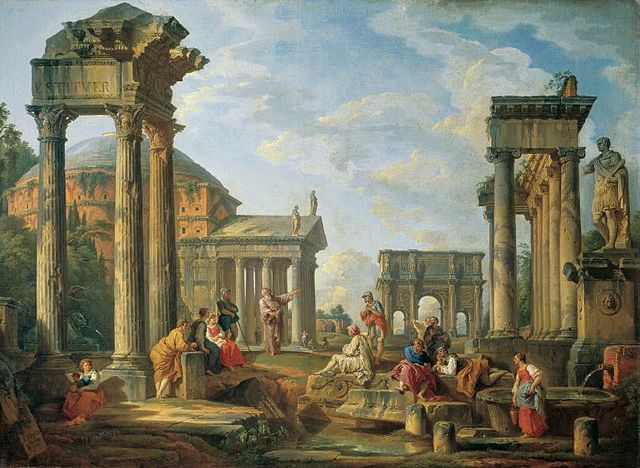
Literary Landmarks
Literary landmarks celebrate the lives and works of influential writers, offering a tangible connection to the creative processes and historical contexts that shaped their writing. These sites provide insights into the personal lives of authors and the environments that inspired their most significant works. Two prominent examples of literary landmarks are The Mark Twain House and Museum and The Emily Dickinson Museum, both of which preserve the legacies of these renowned American writers.
The Mark Twain House and Museum
The Mark Twain House and Museum, located in Hartford, Connecticut, is the former residence of Samuel Clemens, better known by his pen name, Mark Twain. Built in 1874, the house is an example of Victorian Gothic architecture and served as Twain’s home during the height of his literary career. It was here that Twain wrote some of his most famous works, including “The Adventures of Tom Sawyer” and “Adventures of Huckleberry Finn.” The museum offers guided tours of the house, providing insights into Twain’s personal life, his family, and the social issues that influenced his writing. In addition to the house, the museum features exhibits on Twain’s life and works, showcasing original manuscripts, letters, and personal artifacts. The Mark Twain House and Museum not only preserves the physical space where Twain created his beloved stories but also serves as a center for literary education and cultural enrichment.
The Emily Dickinson Museum
The Emily Dickinson Museum, located in Amherst, Massachusetts, is dedicated to the life and works of the enigmatic poet Emily Dickinson. The museum encompasses two historic properties: the Homestead, where Dickinson was born and lived most of her life, and the Evergreens, the home of her family. The Homestead offers visitors a glimpse into Dickinson’s reclusive life and the world that inspired her poetry. Through exhibits and guided tours, visitors can explore Dickinson’s personal correspondence, manuscripts, and the domestic environment that shaped her writing. The museum also hosts educational programs, literary events, and workshops that celebrate Dickinson’s contributions to American literature. By preserving these historic homes and their contents, The Emily Dickinson Museum provides a rich context for understanding the poet’s unique voice and her place in the literary canon.
Musical History
Musical history captures the evolution of genres and the influential figures who have shaped the soundscape of different eras. Key sites dedicated to musical history offer deep insights into the origins and development of various musical styles, as well as the cultural contexts in which they emerged. Two prominent examples are the Birthplace of Jazz in New Orleans and The Country Music Hall of Fame and Museum. These sites not only celebrate significant musical contributions but also preserve the legacy of genres that have had a lasting impact on American culture and beyond.
The Birthplace of Jazz in New Orleans
New Orleans, Louisiana, is renowned as the birthplace of jazz, a genre that has had a profound impact on global music. The city’s rich cultural tapestry, blending African, French, Spanish, and Caribbean influences, created a fertile ground for the development of jazz in the early 20th century. Key locations in New Orleans, such as Congo Square, where African rhythms and dance were preserved and adapted, and the French Quarter, known for its vibrant music scene, played crucial roles in the genre’s evolution. Iconic figures like Louis Armstrong, Duke Ellington, and Jelly Roll Morton emerged from this musical milieu, contributing to jazz’s growth and popularity. Visitors to New Orleans can explore historic jazz clubs, museums, and cultural landmarks that celebrate the genre’s origins, including the New Orleans Jazz Museum and the Preservation Hall, which continue to showcase live performances and preserve the city’s rich jazz heritage.
The Country Music Hall of Fame and Museum
The Country Music Hall of Fame and Museum, located in Nashville, Tennessee, is a premier institution dedicated to preserving the history and celebrating the achievements of country music. Established in 1961, the museum features extensive exhibits on the evolution of country music, from its early roots in folk and blues to its contemporary forms. The Hall of Fame honors legendary artists such as Hank Williams, Johnny Cash, and Dolly Parton, recognizing their contributions to the genre and their influence on American culture. The museum’s collections include historical artifacts, costumes, recordings, and interactive displays that provide a comprehensive overview of country music’s development. Through its educational programs, performances, and exhibitions, the Country Music Hall of Fame and Museum offers visitors an immersive experience into the stories, sounds, and impact of one of America’s most beloved musical traditions.
Summary
Historical Tours in America, Exploring America’s rich historical tapestry through its landmarks and sites offers a profound connection to the past, revealing the narratives that have shaped the nation. From the early settlements and colonial life to the civil rights struggle and musical heritage, each era and location contributes a unique chapter to the country’s story. Historical sites such as Jamestown and Plymouth provide insights into the early colonial experience, while museums like The National WWII Museum and The National Civil Rights Museum commemorate pivotal moments in modern history. The Birthplace of Jazz in New Orleans and The Country Music Hall of Fame celebrate the evolution of American music, reflecting the cultural dynamism of the nation. By visiting these sites, one gains a deeper appreciation for the diverse experiences and achievements that have defined America’s identity.
Recap of Key Historical Eras and Sites
Throughout American history, significant events and figures have left indelible marks on the nation. Early settlements like Jamestown and Plymouth laid the groundwork for the colonial experience, while sites such as Colonial Williamsburg and Historic Philadelphia illustrate daily life and key events during the colonial period. Key battlefields like Gettysburg and Yorktown underscore the profound impacts of the Civil War, and landmarks like The Martin Luther King Jr. National Historical Park and The National Civil Rights Museum reflect the ongoing struggle for civil rights. The gold rush sites of Sutter’s Mill and the Klondike Gold Rush National Historical Park showcase the excitement and challenges of American expansion, while musical landmarks such as The Birthplace of Jazz in New Orleans and The Country Music Hall of Fame highlight the development of influential musical genres. These sites collectively offer a rich panorama of American history and culture.
Importance of Preserving History
Preserving history through dedicated sites and museums is crucial for maintaining a connection to the past and understanding its impact on the present. Historical preservation allows future generations to learn about and appreciate the events, cultures, and individuals that have shaped their world. It helps to foster a sense of identity and continuity, providing valuable lessons and insights into societal development, achievements, and struggles. By preserving artifacts, buildings, and records, historical sites not only honor the past but also contribute to education, reflection, and cultural appreciation. This preservation ensures that the diverse narratives of American history are not lost but rather celebrated and studied, enriching our collective understanding and fostering a deeper appreciation of our heritage.
Encouraging Participation in Historical Tours
Participating in historical tours is an engaging way to connect with the past and gain a more nuanced understanding of history. These tours offer immersive experiences, bringing historical events and figures to life through guided visits, interactive exhibits, and storytelling. They provide opportunities to explore significant sites, learn from knowledgeable guides, and engage with the physical remnants of history. Encouraging participation in these tours helps to foster a greater appreciation for historical preservation and education. It also supports the conservation of historical sites and promotes the importance of understanding history in shaping contemporary society. Whether through visiting local landmarks or traveling to renowned historical sites, engaging in historical tours enriches one’s knowledge and deepens the connection to the shared human experience.
FAQs
What are some of the best historical tours for families?
When choosing historical tours for families, it’s essential to select ones that offer engaging and interactive experiences for all ages. Colonial Williamsburg in Virginia is an excellent choice, providing hands-on activities and costumed interpreters that bring 18th-century America to life. The National Air and Space Museum in Washington, D.C., offers fascinating exhibits on aviation and space exploration that captivate both children and adults. The Henry Ford Museum in Michigan showcases American innovation through its extensive collection of artifacts, including the famous Rosa Parks bus, making it a hit with families. Additionally, The American Revolution Museum at Yorktown, Virginia, combines historical reenactments with interactive exhibits, making it a compelling choice for families interested in the American Revolution.
How can I find guided historical tours in America?
Finding guided historical tours in America can be accomplished through various resources. Many cities and states have official tourism websites that provide information on local guided tours and historical attractions. Travel agencies often offer historical tour packages and recommendations based on your interests. Local historical societies and museums frequently organize guided tours and can be valuable resources. Online platforms such as TripAdvisor, Viator, and GetYourGuide offer reviews and booking options for historical tours nationwide. Additionally, local visitor centers can provide information on available tours and historical sites when you arrive in a city or region.
Are there any historical tours focused on minority histories?
Yes, there are several historical tours that focus on minority histories, offering important perspectives on diverse cultural experiences and contributions. The National Civil Rights Museum in Memphis, Tennessee, provides a comprehensive look at the Civil Rights Movement and African American history, including the site of Dr. Martin Luther King Jr.’s assassination. The African American History and Culture Museum in Washington, D.C., part of the Smithsonian Institution, delves into African American history and culture. The Japanese American National Museum in Los Angeles highlights the Japanese American experience, including internment during World War II. Additionally, the National Native American Museum in Washington, D.C., offers insights into Native American history, culture, and contemporary issues.
What is the best time of year to take a historical tour in America?
The best time to take a historical tour in America largely depends on the region and your preferences. Spring and fall are generally ideal, offering mild weather and fewer crowds, which enhances the touring experience. Summer is popular for travel, with extended hours and special events at many historical sites, although it can be more crowded. Winter provides a quieter time for visiting, though some locations may have reduced hours or be closed, so it’s important to check for seasonal closures and weather conditions before planning your visit.
How do I prepare for a historical tour?
Preparing for a historical tour involves several key steps to ensure a smooth and enjoyable experience. Research the site or museum in advance to understand its hours of operation, admission fees, and any special exhibits. Dress comfortably and appropriately for walking, as many tours involve significant amounts of walking and outdoor activities. Verify accessibility options if needed. Prepare questions if you have specific interests regarding the history being covered. Bring essentials such as water, snacks, a camera, and a notebook for notes or documentation. Finally, decide whether a guided or self-guided tour best suits your preference for in-depth explanations or flexible exploration.
